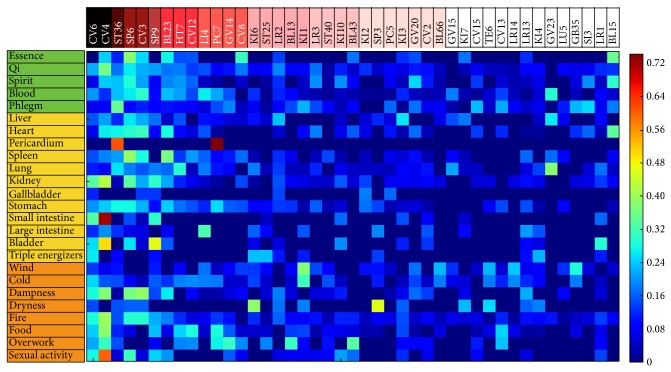Figure 4.
The tf-idf(a,p) matrix. In the case of tf-idf(a,p), all were calculated in the other way around. Using tf-idf(a,p) values, each pattern id was represented as a vector in 114 dimensional vector spaces (the number of acupoints). In this matrix, each pattern (sample) is represented by a vector of tf-idf(a,p) weights of 43 acupoints (feature). The most frequently used patterns in the NaeGyeong chapter of DongUiBoGam were “fire” (94 times), “qi” (89 times), “blood” (46 times), “phlegm” (39 times), and “heart” (34 times). Regarding “fire,” CV4 (tf-idf: 0.42), SP6 (tf-idf: 0.31), CV3 (tf-idf: 0.31), CV6 (tf-idf: 0.30), and SP9 (tf-idf: 0.23) were analyzed as applicable acupoints. Analysis of the pattern “qi” showed that acupoints CV4 (tf-idf: 0.38), SP6 (tf-idf: 0.28), CV6 (tf-idf: 0.23), CV3 (tf-idf: 0.23), and SP9 (tf-idf: 0.22) had high tf-idf values. Notably, the top two patterns, “fire” and “qi,” shared the same top five acupoints.

